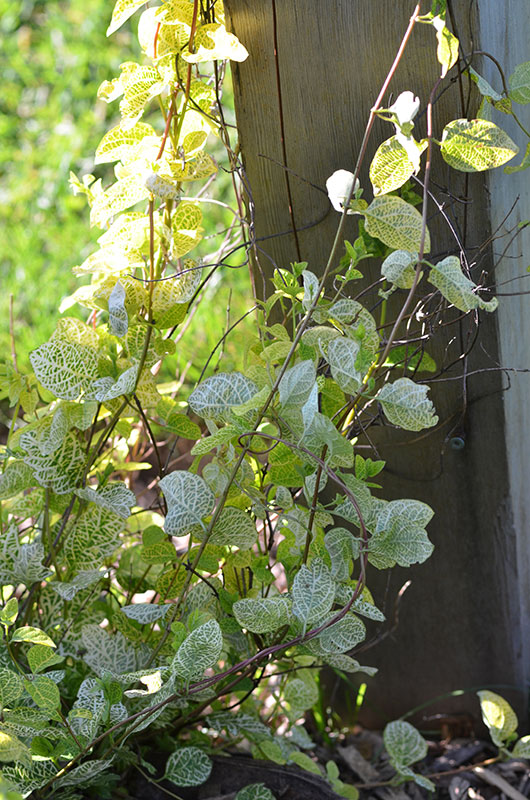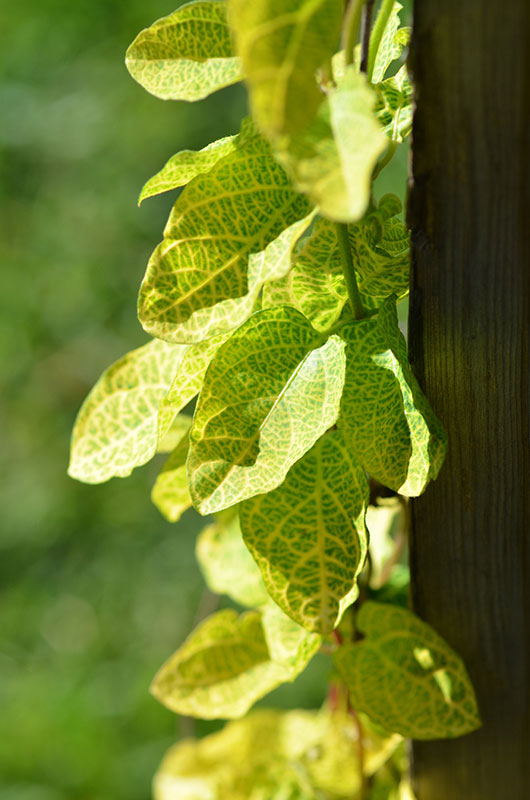| General Description | Lonicera japonica 'Aureoreticulata' is a vigorous woody vine invasive to midwestern United States with green leaves marked with attractive golden venation. |
| Landscape | Will climb along trellises and fences and makes a good screen for patios and porches near seating where its fragrance can be appreciated. Makes good ground cover and erosion control on banks and slopes. |
| Cultivation | Grow in full sun to part shade, in average, moist, well-drained soil containing loam. Leaf colour and flowering are best in full sun. Tolerant of drier soil. Invasive: growth should be monitored closely. Ground cover growth may be cut back using a rotary mower on a high setting. As a general rule, this vine should not be grown where it can climb other plants like shrubs and trees as it will suffocate them. |
| Pests | No serious pests or diseases of note. |
| Notable Specimens | The A.M. Cuddy Gardens, Strathroy, Ontario, Canada. |
| Habitat | Horticultural origin. |
| Leaf Description | Oval, green with golden cross-venation (smaller veins connecting secondary veins), 7.5 cm long. Semi-evergreen to evergreen in warm winter climates. |
| Flower Description | Showy, slender, tubular, bi-lipped, white maturing to pale yellow, very fragrant. Attracts hummingbirds and butterflies. |
| Fruit Description | Berries are black when mature in late summer to autumn. |


